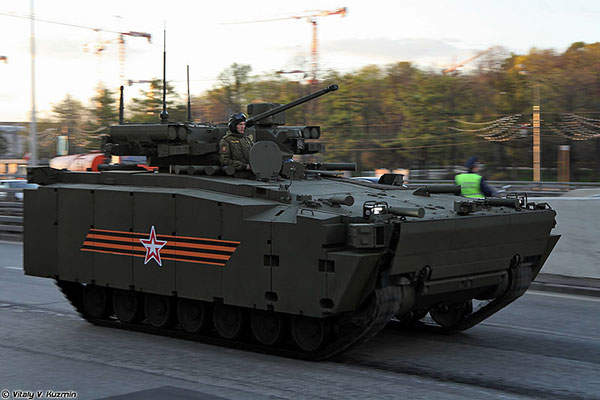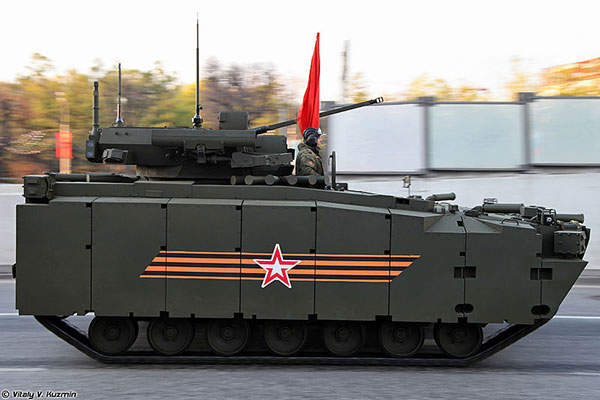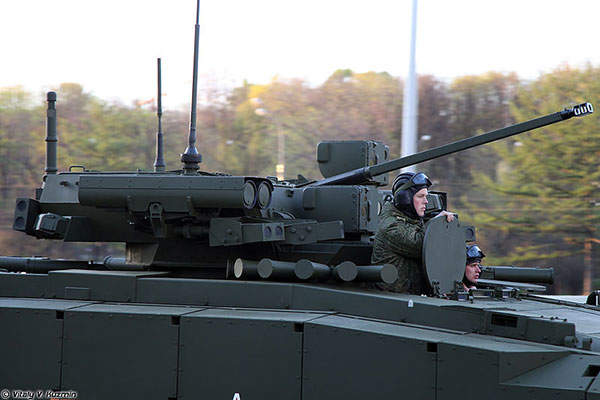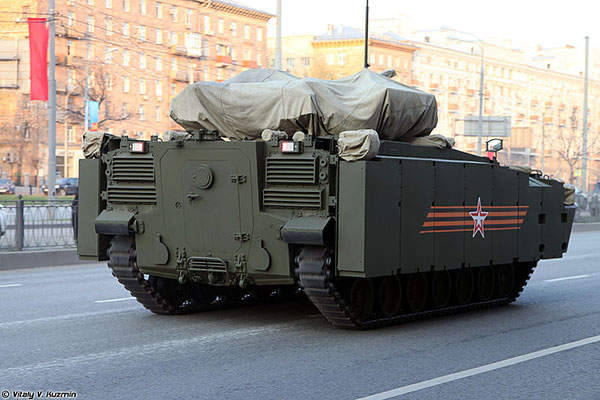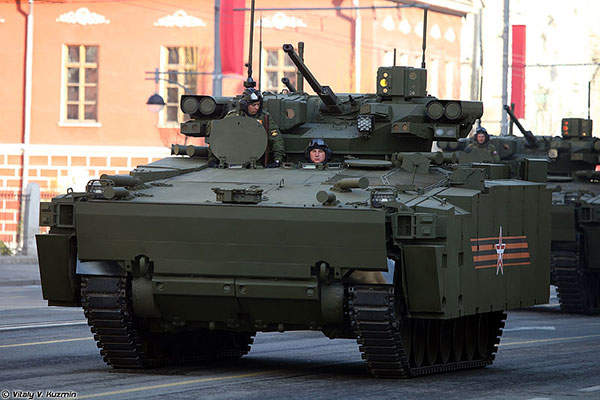
The new Kurganets-25 (Object 695) fully-amphibious infantry fighting vehicle (IFV), designed for the Airborne and Ground Forces of Russia, was unveiled at the Moscow Victory Day Parade in May 2015.
It is used to transport infantry squad to the battlefield and to provide direct fire support against enemy vehicles. Full-scale production of the vehicle is expected to begin in 2016.
Design and features
The ATOM is a heavy-wheeled infantry fighting vehicle (IFV).
The Kurganets-25 armoured fighting vehicle is based on a tracked chassis. Its hull is equipped with large modular armour systems.
The IFV has a weight of up to 20t and is operated by a crew of three, including driver, commander and gunner. Up to eight infantry men are accommodated by the troop compartment at the rear.
A single piece of hatch cover is provided to the driver, who is positioned at the front of the vehicle on the left. Three more hatches are located next to the driver’s compartment for firing and emergency exit.
Troops can enter and egress the vehicle through a large hydraulically operated rear ramp, which has a fire port and an additional door. The engine compartment is located at the front of the hull.
Kurganets-25 armament
The Kurganets-25 infantry fighting vehicle has a remotely controlled turret towards the rear. This turret is mounted with a 30mm 2A42 automatic cannon, a 7.62mm PKTM coaxial machine gun and up to four Kornet-EM ammunition-portable anti-tank guided missile (ATGM) systems.
This 30mm cannon has a minimum rate of fire between 200 and 300 rounds a minute and a maximum rate of fire of 550 rounds a minute. The 10.5kg machine gun has an aiming range up to 1,500m and a rate of fire between 700 and 800 rounds a minute.
The ATGM can penetrate explosive reactive armour between 1,100mm and 1,300mm, while its firing range varies between 150m and 10,000m.
Protection
The armoured combat vehicle incorporates an Afghanit active protection system (APS), which provides protection against anti-tank guided missiles as well as rocket-propelled grenades. Occupants are protected from a variety of threats from the modular armour systems.
The passive armour protection, nuclear, biological and chemical (NBC) protection kit, and smoke grenade dischargers aboard the vehicle provide improved crew survivability. The IFV can be equipped with additional protection systems to meet specific mission needs.
Fire control
Weaponry is controlled by an on-board computer-based automatic firing control system, which is capable of selecting the targets automatically in both active and passive modes.
The driver is provided with three periscopes for forward observation during day time.
Sighting equipment for the gunner and commanders includes a thermal imager, an eye-safe laser rangefinder, and multispectral sights. Cameras installed on the vehicle offer full 360° view and situation awareness for the crew.
The turret is equipped with a global positioning system (GPS) / inertial navigation system (INS) and modern sensors.
Propulsion and performance of Kurganets-25 IFV
Power for the Kurganets-25 infantry fighting vehicle comes from an 800hp turbocharged diesel engine coupled to a transmission system. The vehicle can run at speeds up to 80km/h on highways and has a range of approximately 500km.
The IFV has seven rubber-tired road wheels on both sides. It can negotiate gradients of 60% and side slopes of 40%. The torsion bar suspension system allows the vehicle to overcome obstacles on difficult terrains.
Two water-jets are fitted at the rear section, enabling the vehicle to perform amphibious operations. The Kurganets-25 can travel at a speed of 10km/h on water.

